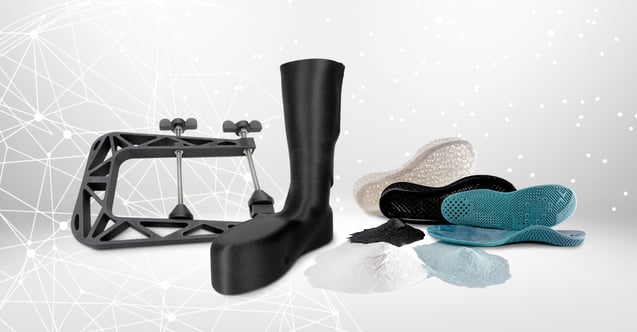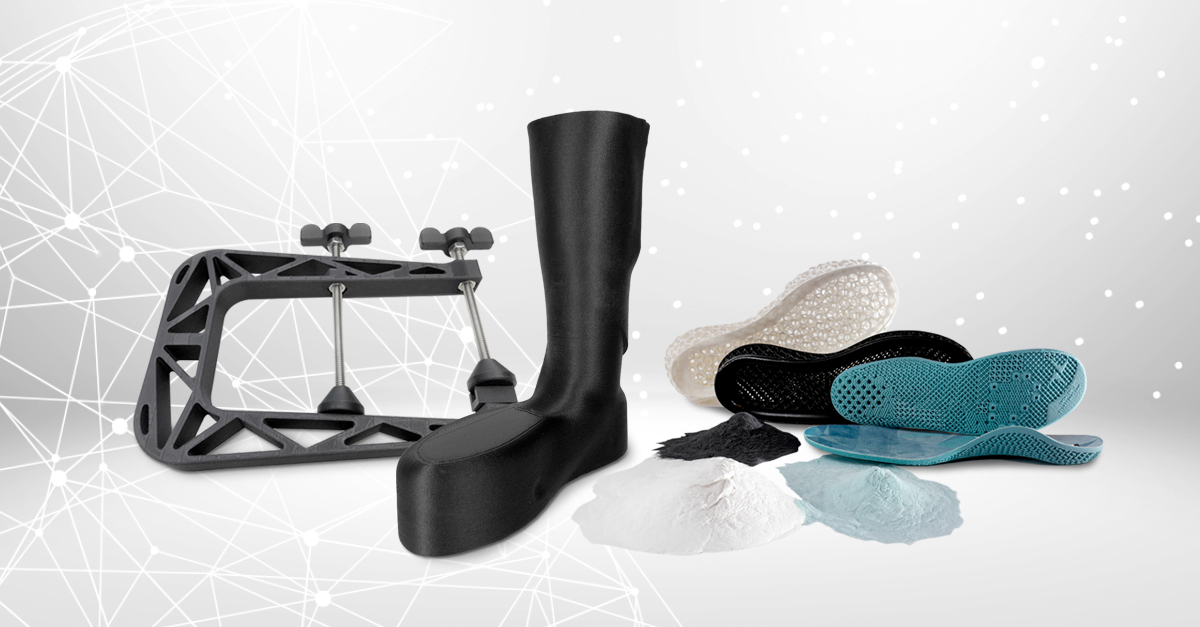3D printing materials for industrial applications. From hobby to professional printing.

3D printing is impressively complex: It is new and also already established. On the one hand, it stands for technology of the future, and on the other hand, many designers - still (?) - don't know what to do with it. It provides answers and at the same time raises questions. For some it is their new hobby, for others it is already an established production technique; for some it is the new hype and for others it is already lived routine. And wherever you are in terms of 3D printing and what you know or think about it - for us at LEHVOSS, it is an industrial application that we have been serving for over 10 years with material developments and, above all, material advancements.
3D printing: similarities and differences between hobby and industrial 3D printing.
Like any "hobbyist," the fresh-faced 3D printer starts with entry-level materials that practically anyone can work with - PLA or PETG plastics, for example. After the first results - a vase, a Benchy or a plastic cat for his mother for her birthday - he states, "Everything's great, but: "surely there's more to it, isn't there?" A more powerful printer is purchased; the occupation with CAD systems and technical materials begins ... In short: the beginner becomes an advanced or "semi-professional" who further optimizes the interaction of the individual parameters.
And it is precisely this optimization of the interaction that is particularly important in industrial 3D printing: The precise matching of 3D printing material, 3D printer and 3D printing-compliant design to the planned process or the associated process settings. Whether standard plastics - such as PP or ABS - are used or high-performance plastics - such as PPS, PEEK, PEKK, or PEI – is irrelevant.
After all, only the neatly coordinated interaction guarantees a satisfactory result in the end, or the reliable and repeatable quality that is so important for industrial 3D printing. Whether it's for holding the trowel in a police car, for a device in mechanical engineering or for an urgently needed spare part in the train.
3D printing means considering four crucial parameters at the same time: Printing material - Printing process - Design - Process settings.
Basically, when/where does industrial 3D printing make sense?
3D printing shows its strengths in functional prototyping, for example, when structural components are required that already meet the requirements or specifications of the final application. This is an area of application for which LEHVOSS offers industrial 3D printing materials with a correspondingly adapted property profile.
Other applications for 3D printing include:
- the spare parts sector - here, industrial 3D printing or additive manufacturing processes can also be used very efficiently,
- component manufacturing in the start-up phase of a product,
- special machine construction - when only a few components are needed - as well as
- fixture construction for the production of resilient, resistant components.
For cost reasons, 3D printing processes are usually out of the question for extensive series production in large quantities. At least not today - and who knows what tomorrow will bring.
Additive manufacturing processes are often associated with "everything very simple". Is everything that simple?
On the one hand: a clear "yes and no". The best example here is the SLS process: the scanner must be perfectly calibrated in order to couple the heat homogeneously into the powder via the exact interaction of speed and energy. It's the same with filament printing (FFF), where, for example, the parameters temperature and guide speed of the print head must be evaluated or worked out in advance.
On the other hand: a clear "yes", because LEHVOSS material developers support their customers along the entire development and production process in all aspects. Primarily, of course, in material development and additionally with regard to the entire production environment as well as the component itself. Be it in prototyping, small series or a globally offered/distributed product. This was the case about 10 years ago, when a U.S. sporting goods manufacturer first had the idea of having a midsole produced using 3D printing (which was then used in the world's first mass-produced sneaker with a 3D printed part).
The key to the further spread of industrial additive manufacturing lies in 3D-compliant design. Keyword: Supports.
What is the future of industrial 3D printing and additive manufacturing? Where are the drivers?
In the future, 3D printing materials and the development of materials to meet specific requirements will play an increasingly important role. This can be seen in the classic example of "warpage", i.e. the warping or deformation of a surface/component: Here, there are LEHVOSS material solutions that already reduce the causes of the stresses or prevent them from occurring in the first place.
Examples of the importance of such demand-oriented material development in the context of additive manufacturing processes have already existed at LEHVOSS for around 10 years. These include:
- Customized tool carriers and fixtures for industrial operations - based on robust, durable LUVOCOM 3F materials processed using FFF and FGF printing processes.
- Cost- and handling-optimized laminating standards (laminating molds or laminating tools) for the production of advanced orthoses made of CFRP laminates. These offer a) the advantage of significant effort and lead time reduction and are b) fully recyclable (due to the use of thermoplastic materials instead of thermoset foams).
- Customized insoles that fully serve the needs of runners or patients - based on a LUVOSINT-TPU material processed by laser sintering.
Bottom line: Don't worry - you don't have to reinvent the wheel.
For those who have been familiar with injection molding for a long time, for example, and somehow shy away from 3D printing - because it simply still represents uncharted territory - let us assure you: Yes, of course, it is a transfer from a traditional technology to a "new" technology. But the further development of all decisive parameters - from the 3D printing materials to the printers to the software - has already progressed so far and been continuously accompanied by LEHVOSS that we are always in a position to support customers in all aspects of 3D printing. All the way to functional components in series size that are absolutely on a par with injection-molded components.
In other words, for those for whom 3D printing still represents unknown territory that they would like to explore, they can count on having an extremely experienced companion at their side in LEHVOSS.
